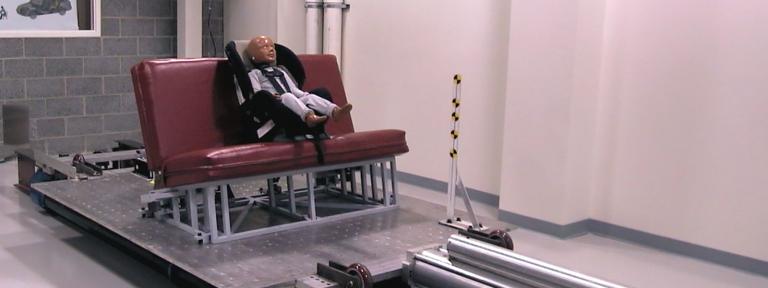
Front to back or back to front, either way you look at it back seat passengers have been, well, taking a back seat in crash safety research. Dr. Massoud Tavakoli and a team of researchers at Kettering University’s Crash Safety Center are remedying that with a research project funded by TRW to explore improving rear occupant seat belts and safety components.
“The adult front occupant has been receiving a great deal of attention for the last couple of decades, and as a result, a number of safety systems have been implemented to protect the front seat occupant,” said Tavakoli, professor of Mechanical Engineering. “The adult rear occupant is now emerging as a likely candidate for improving safety,” he added.
In a frontal crash, the rear occupant does not benefit from airbag deployment. So, the question is whether or not improvements can be made to the seat belt and its components, such as the pre-tensioner, to mitigate injury probability for the adult rear occupant in a frontal crash, explained Tavakoli, who will be conducting the research with Dr. Janet Brelin-Fornari, Crash Safety Center director and professor of Mechanical Engineering, and a graduate assistant.
The TRW-funded research with Kettering will attempt to answer that question. Tavakoli said the plan is to use a combination of several design variations for the rear seat seat belt to quantify its effect on reducing injury to the rear seat adult occupant during a frontal crash.
The rear occupant research grant is for $30,000. TRW has sponsored several research projects with the Crash Safety Center at Kettering amounting to more than $100,000, according to Brelin-Fornari. TRW was an original donor toward the construction of the facility and donated capital including a frontal crash test dummy, high speed video camera, and miscellaneous equipment and materials, she added. Their most recent dummy donation was a new (used) ATD (Hybrid II 50th percentile male).
Contact: Dawn Hibbard
810.762.9865
dhibbard@kettering.edu